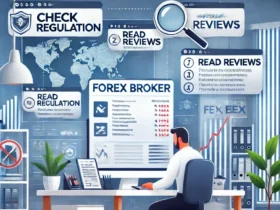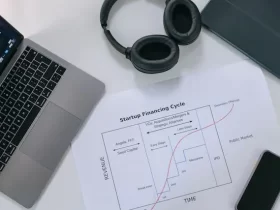Globalization has shifted the foundations of today’s enterprises, making business processes more dynamic, competitive, and complicated.
As a result, to maximize business success, all companies interact with suppliers to provide various goods and services. Suppliers are an essential component of every organization; thus, controlling them is critical.

A definition can only encompass so much given the intricacy of commercial interactions, the variety of suppliers engaging with businesses, and their sheer importance. As a result, this blog will discuss the importance of supplier management and its advantages, procedure, and best practices.
Why Companies Require Supplier Management?
When it comes to determining why companies require supplier management, there are two central pillars to consider:
- To determine if the suppliers are meeting the organization’s needs.
- While working with suppliers throughout their lifetime to discover opportunities for improvement
These two criteria emphasize the primary reason for supplier management. It is to guarantee that we are getting the most value from our suppliers for the relevant requirements, given the resources we have invested in them.
To get the most out of a provider’s administrations, it’s critical to keep track of and evaluate their performance.
Through regular contact and criticism, a business has a transparent relationship with the supplier, which aids in identifying areas for growth and providing prompt solutions.
Benefits of Supplier Management
- Organizations’ supplier base is growing due to various causes, including increasingly globalized business processes that allow access to worldwide suppliers, rising supply chain complexity, expanding the scope of operations of organizations, and so on.
Managing the whole lifecycle of suppliers has gotten complex as the number of suppliers involved with businesses has increased. Organizations may handle their large number of suppliers with ease if they have a well-structured supplier management procedure in place.
- Organizations will be able to find cost-cutting possibilities in the supply chain and analyze the quality of supplier output if they have excellent supplier management processes. This influences and contributes to the organization’s principal priority.
- You may smooth out fundamental facts and information about the providers’ life expectancy after providing the board architecture in place. It allows enterprises to understand better the number and types of involved suppliers and how they perform. It aids in identifying areas for improvement and developing plans to improve their performance even more.
- To guarantee that they are meeting the organization’s needs, each supplier must meet a set of precise criteria.
- This is arguably one of the essential advantages of supplier management. Because your organization’s display is so reliant on its vendors, you need to know how they’re performing.
The board for provider execution will not only allow you to assess provider consistency, but it will also offer you specific information regarding their presentation. Supplier management entails developing multiple KPIs to monitor supplier performance and assessing the value provided by the suppliers using these metrics.
- Supplier management may assist you in building development programmes to support suppliers, especially those who cater to long-term/critical requirements and help them enhance their performance once you’ve reviewed them and found areas for improvement.
- Although it may not appear so, the relationships you form with your suppliers may be pretty helpful to your business. You develop long-lasting, trust-based relationships with your suppliers when you engage with them and include them in the process of determining how to meet the appropriate standards. Suppliers are more inclined to understand your company demands and evaluate strategies on your terms when you collaborate with them.
- Another significant benefit of effective supplier management is identifying and mitigating supplier risk.
- It is vital to building a supplier management process now that we have acknowledged the necessity and advantages of supplier management. The method will advise a business on its tactics to manage the involved suppliers’ whole lifespan.
Management Process
- Before you begin your supplier the executive’s contact, it is critical to determine the arrangement of business aims and goals for which merchants are required. It will highlight what outsider administrations each office demands, allowing you to arrange the most appropriate vendors for each request without duplicating effort or assets. These goals will also aid in evaluating provider performance about the goals that were set for them.

- Once you’ve established the goals and requirements that drive provider inclusion, you’ll need to develop the criteria for selecting providers who will provide you with the most value for your money.
- Standard measurements include cost, quality of previous work, industrial recognition, legal reputation, and so on. RFQs, RFPs, and RFIs are also used by businesses to find suitable suppliers, especially when the requirements are high.
- The next step is to analyze all relevant providers using your established criteria. The majority of businesses assess suppliers based on the prices they have provided. However, it’s also critical to consider the other factors you’ve specified.
- Examine the quotes and proposals provided by possible vendors to verify you’re getting the most bang for your buck. Examine the terms and conditions to see how effectively the suppliers intend to satisfy the company’s needs. Simultaneously, make sure you’ve done a complete, holistic analysis of the suppliers’ strengths and weaknesses, as well as a study of how the external environment’s risks and possibilities can affect your relationship with them.
- Now that you’ve picked suitable suppliers, it’s time to finalize the contractual procedure and bring them on board. Ensure that all essential parties are remembered for the contractual system to get valuable opinions on how the agreement may maximize value. The contracting method is commonly accomplished as a team with top leaders from specialist units by the money/acquisition group. Still, the gatherings that will connect with suppliers regularly are not advised.
- Collaborate with suppliers to achieve a smooth negotiation process with few stumbling obstacles. We’ve previously proven the advantages of developing meaningful relationships with suppliers.
- Once you’ve chosen your suppliers, the supplier management process doesn’t end there. After they’ve been selected and onboarded, you’ll need to review their performance regularly to check how effectively they’re meeting the goals and standards. It also shows us how well our supplier management method works and how we may improve it.
FAQ’s of Supplier Management
What is the purpose of supplier management?
The purpose of Supplier Management is to design, oversee and survey providers of IT-administrations and framework and to screen the concurred administration levels.
What is good supplier management?
Good supplier management is based on these five points: provider lifecycle the executives: provider execution the executives; provider hazard, variety and consistence the board; and provider relationship the executives.
What are the activities involved in supplier management?
Activities involved in supplier management are:
Segmenting the Supply Base.
Portioning the Supply Base.
Measure and Improve Supplier Performance.
Come out better as a Customer.
Work together with Suppliers.
Further, develop Supplier Quality.
Final Verdict
In this article, we’ve looked at a critical area of corporate operations: supplier management. Because of the globalization of economies, including suppliers in your company operations has become unavoidable. A good supplier management approach helps you get the most out of your company’s needs and provides you with a competitive advantage.












Leave a Reply